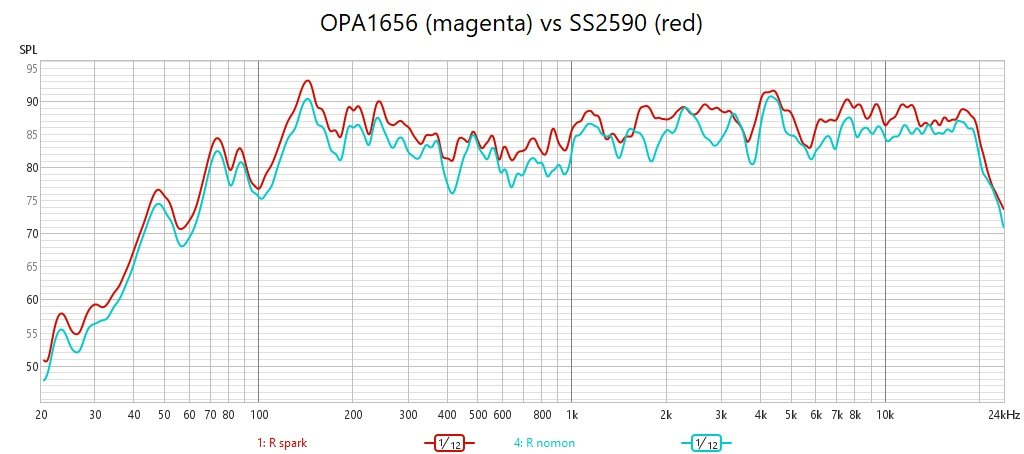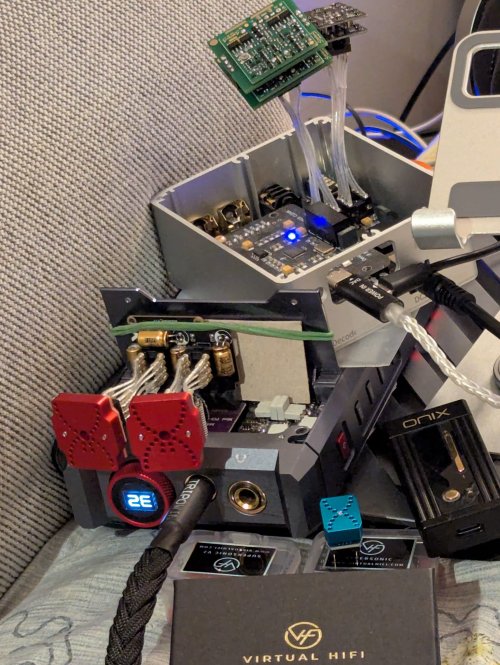santodx5
New Head-Fier
- Joined
- May 16, 2006
- Posts
- 14
- Likes
- 2
Helo,
Here are some new photos:
https://s27.postimg.org/qo4b6k7qb/20161224_001950_resized_1.jpg
https://s27.postimg.org/ov1ei8mjn/Picture_20164928064949_resized_2.jpg
There are 15 opamps and they are all NE5532.
Right now I am waiting to test the PSU if I can use all class A opamp.
I read the link about Sonic Imagery but only a few post, hope someone else can give more feedback. It is the only discrete opamp that gives complete specs and test in the market but very few review so far.
Someone recommends LME 49720N in the line driver ( 6 near the caps), I am not knowledgeable about opamps, hope someone can give some advice.
Thanks
Here are some new photos:
https://s27.postimg.org/qo4b6k7qb/20161224_001950_resized_1.jpg
https://s27.postimg.org/ov1ei8mjn/Picture_20164928064949_resized_2.jpg
There are 15 opamps and they are all NE5532.
Right now I am waiting to test the PSU if I can use all class A opamp.
I read the link about Sonic Imagery but only a few post, hope someone else can give more feedback. It is the only discrete opamp that gives complete specs and test in the market but very few review so far.
Someone recommends LME 49720N in the line driver ( 6 near the caps), I am not knowledgeable about opamps, hope someone can give some advice.
Thanks





















